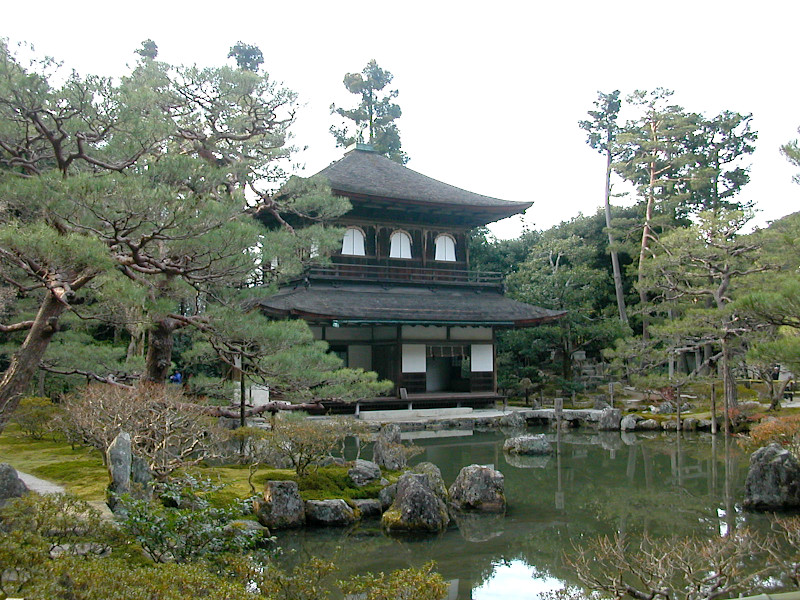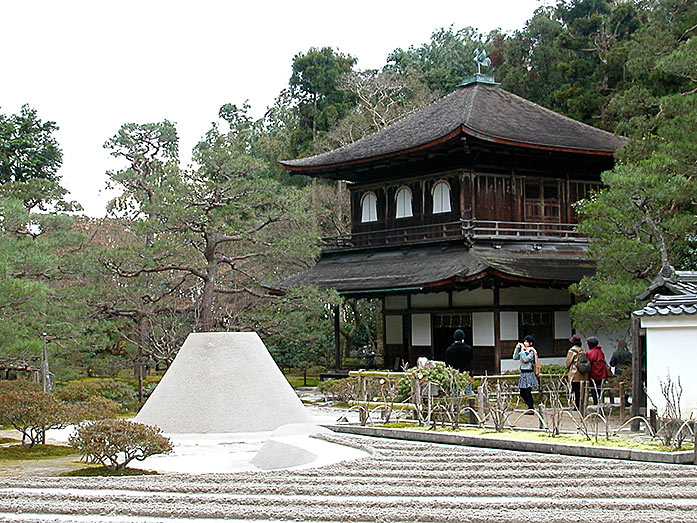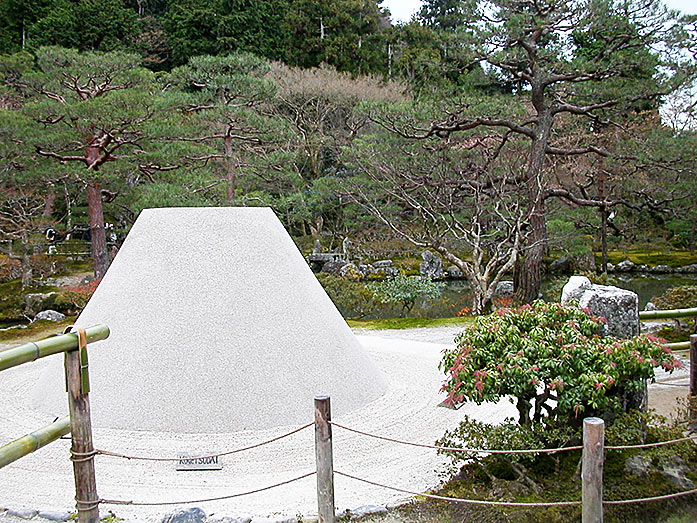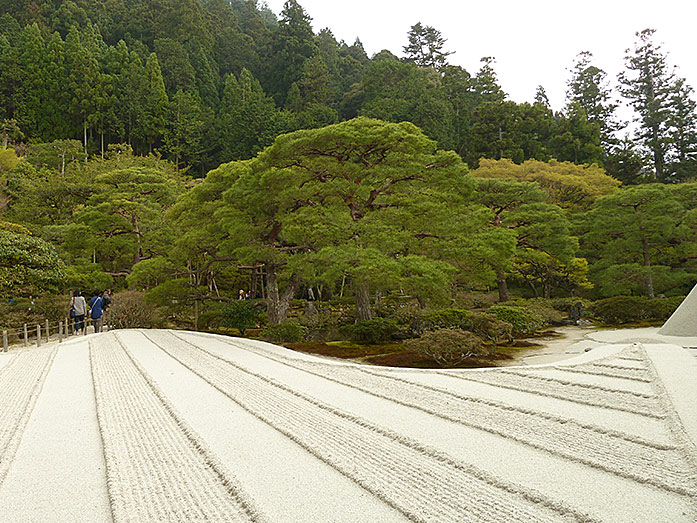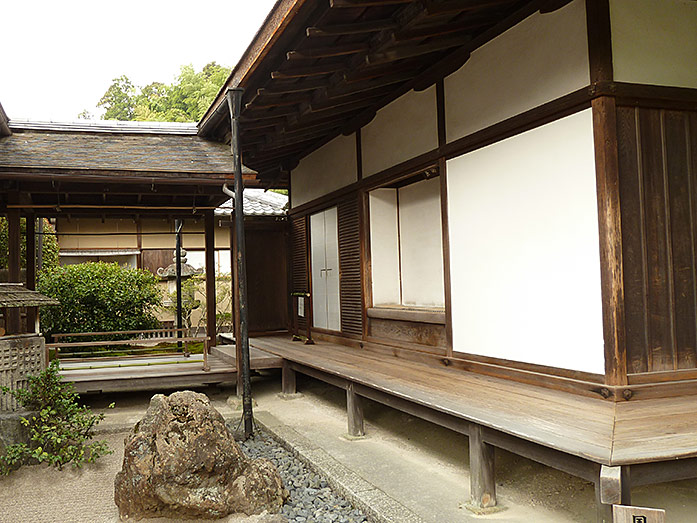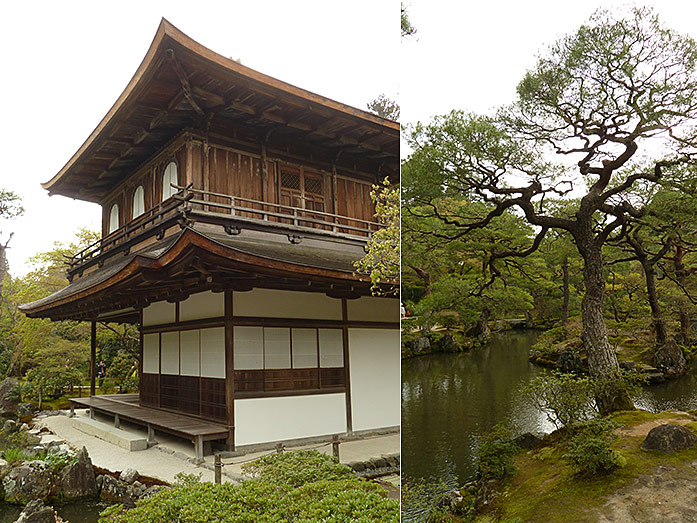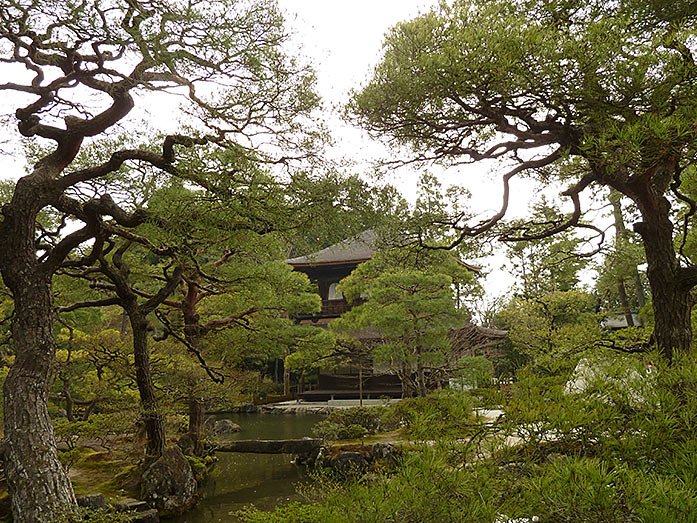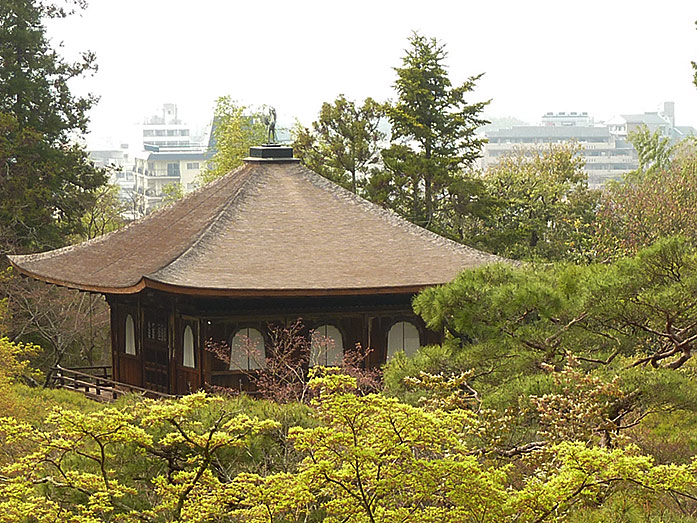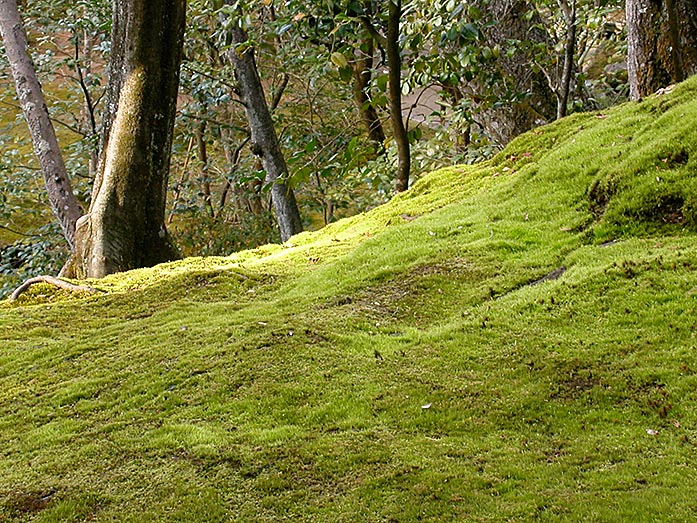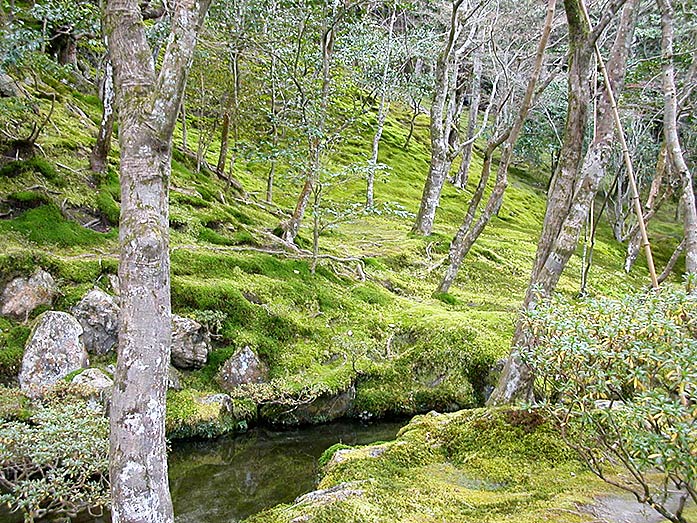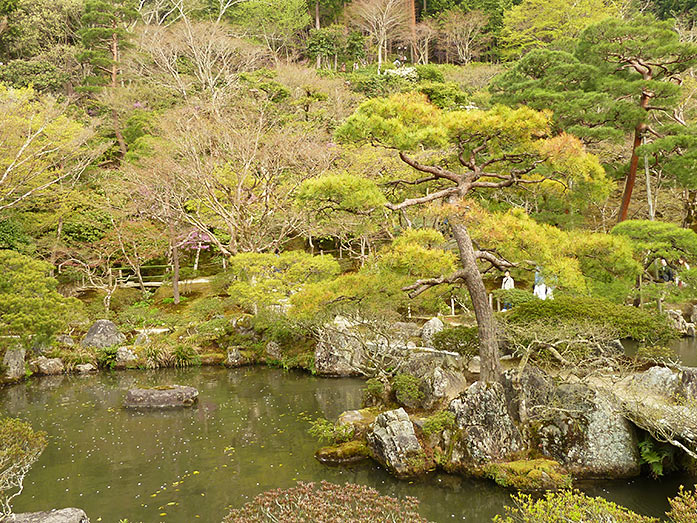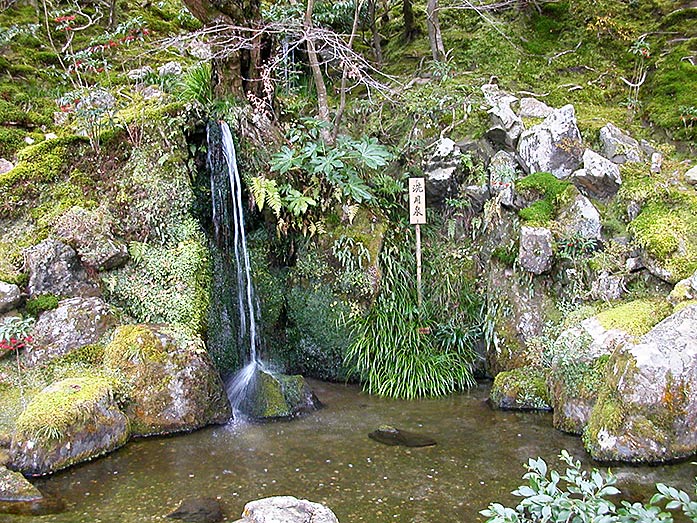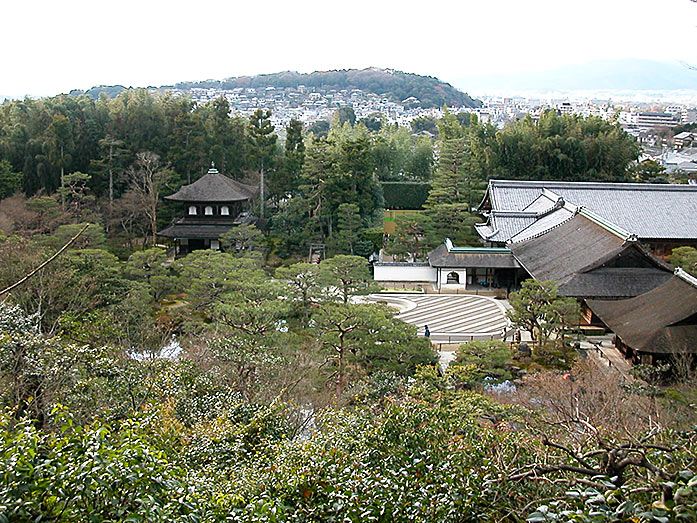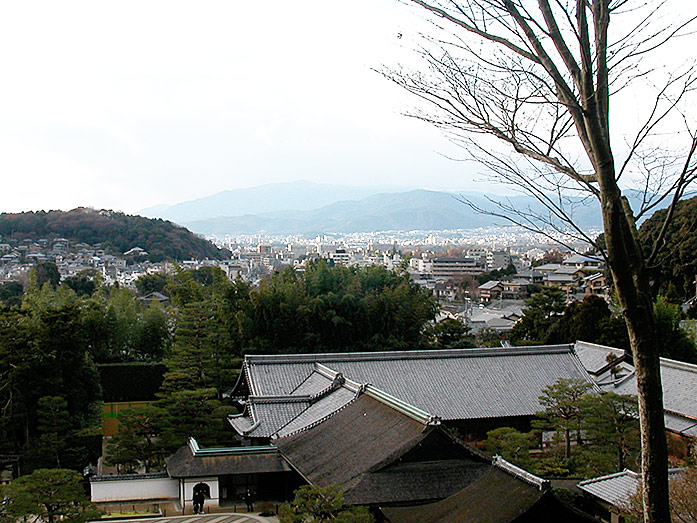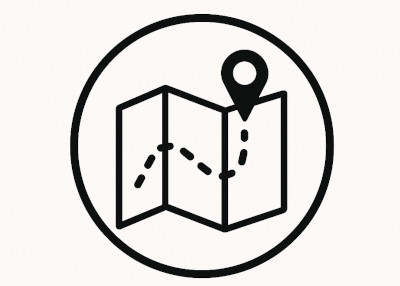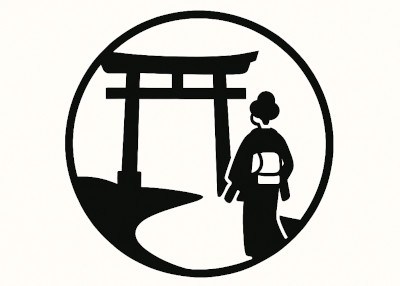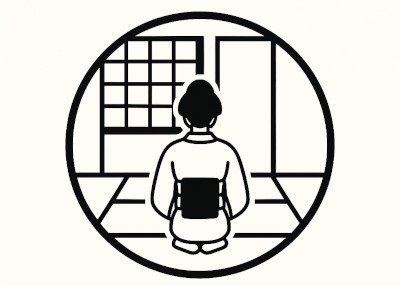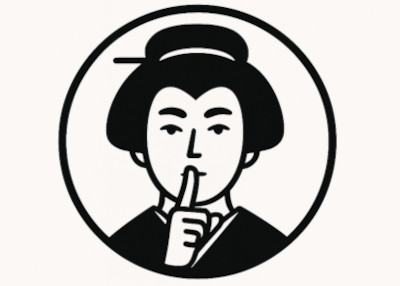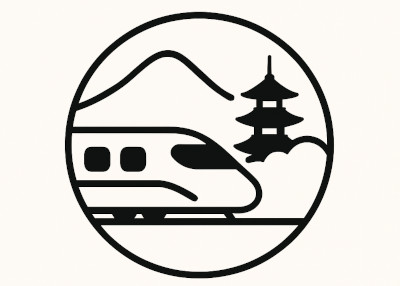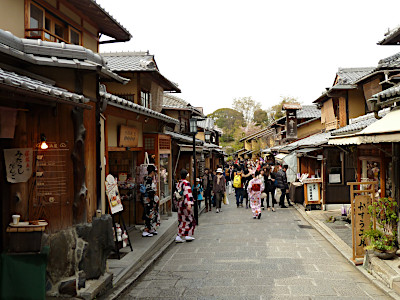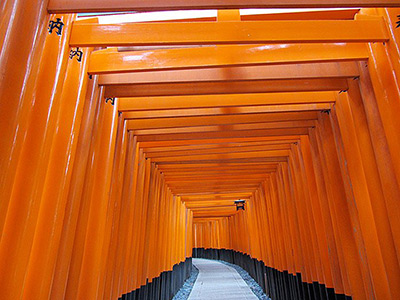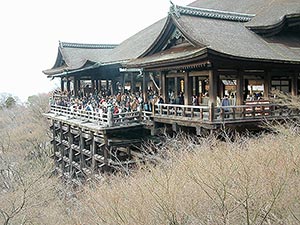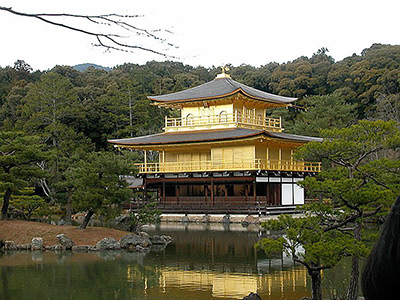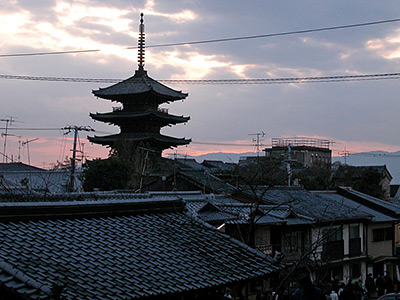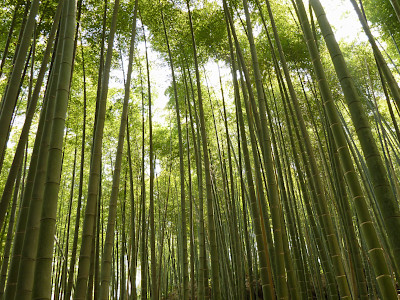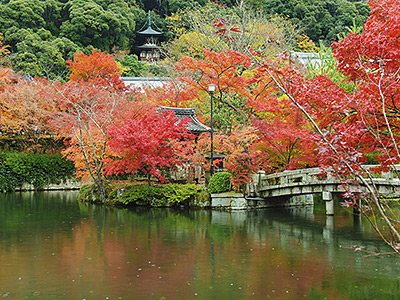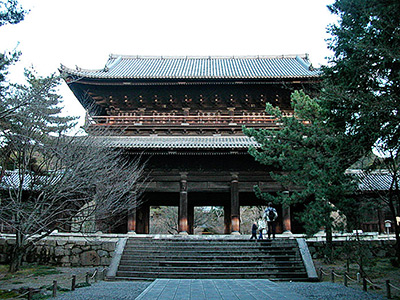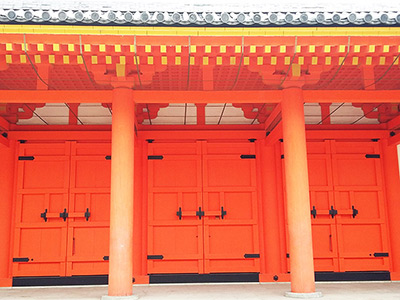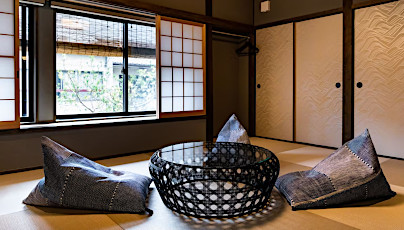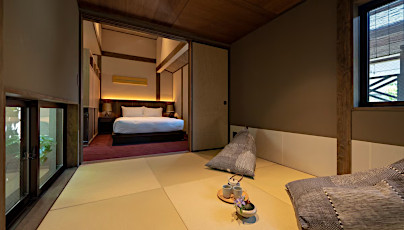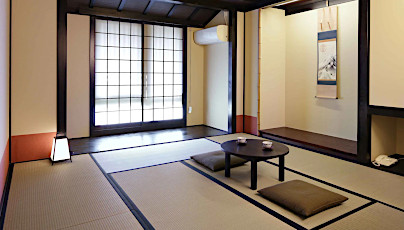Ginkaku-ji (Silver Pavilion) in Kyoto
This post can contain affiliate links, which means that we may receive a small commission if you make a purchase using these links.
Facts & Figures
Ginkaku-ji Temple also known as "Temple of the Silver Pavilion" is one of the most famous Zen temples in Kyoto, besides Kinkaku-ji and Kiyomizu-dera. The temple area and its buildings are a perfect showcase for the Higashiyama Culture of the Muromachi period (1338 – 1573). It was a time when traditional arts flourished like tea ceremonies, ikebana (flower arrangement), Noh theater, Japanese garden and landscape design, and poetry. Ginkaku-ji was at the center of the movement with the support of his founder shogun Ashikaga Yoshimasa (1436 - 1490). The architectural highlight is the two-story Kannon Hall (Ginkaku, Silver Pavilion). In the beginning, it was planned to cover the exterior of the hall in silver foil, but this plan was never realized because of the Onin war (1477 - 1487) and later the death of Ashikaga Yoshimasa in 1490. But it is exactly this imperfection that makes Ginkaku-ji so beautiful. This special aesthetic is called wabi-sabi in Japanese. Ginkaku-ji has the status of a UNESCO World Heritage Site.
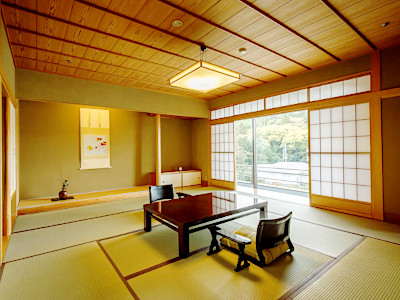 Best Places to Stay in Kyoto >
The sand garden ("Sea of Silver Sand") of Ginkaku-ji has become particularly well known for the massive sand cone called "Moon Viewing Platform” (Ginshadan) which symbolizes Mount Fuji. The whole temple complex with its beautiful moos and dry sand gardens, bamboo groves, Silver Pavilion, and 6 smaller structures was one of the highlights of my Kyoto temple tour. Ginkaku-ji is also at the starting point of the very popular Philosopher's Walk near Chion-in Temple, Nanzenji Temple, and Heian Jingu Shrine in Kyoto. It is a must-see destination during your visit, especially in the cherry blossom season (March - April). My tip: You have great views over the temple grounds and Kyoto from a hill behind the main buildings.
Best Places to Stay in Kyoto >
The sand garden ("Sea of Silver Sand") of Ginkaku-ji has become particularly well known for the massive sand cone called "Moon Viewing Platform” (Ginshadan) which symbolizes Mount Fuji. The whole temple complex with its beautiful moos and dry sand gardens, bamboo groves, Silver Pavilion, and 6 smaller structures was one of the highlights of my Kyoto temple tour. Ginkaku-ji is also at the starting point of the very popular Philosopher's Walk near Chion-in Temple, Nanzenji Temple, and Heian Jingu Shrine in Kyoto. It is a must-see destination during your visit, especially in the cherry blossom season (March - April). My tip: You have great views over the temple grounds and Kyoto from a hill behind the main buildings.
- Ginkaku-ji
- Opening Hours - 9:00 am to 4:30 pm (December to March)
- Opening Hours - 8:30 am to 5:00 pm (rest of the year)
- Closed - no closing days
- Admission Fee - 500 yen (Adults), 300 yen (Junior High and Elementary School Students)
History
Ginkaku-ji or its official name Jisho-ji (Temple of Shining Mercy) was built in 1460 as the retirement villa for shogun and art lover Ashikaga Yoshimasa (1436 - 1490). In 1482 he added the Silver Pavilion to the property. The model or blueprint for his villa was Kinkaku-ji or "Temple of the Golden Pavilion" constructed by his grandfather Ashikaga Yoshimitsu (1358 - 1408). Ashikaga Yoshimasa became a Zen Buddhist monk in 1485. After his death, the villa was turned into a temple and belongs now to the Buddhist Shokoku School of the Rinzai Zen sect. It is a UNESCO World Heritage Site since 1994. The last extensive restoration of the temple started in 2008 and was completed in 2010.
Location

Ginkaku-ji is located along Kyoto's eastern mountains (Higashiyama) within the Sakyo ward near Chion-in Temple, Nanzenji Temple, and Heian Jingu Shrine.
Address: 2 Ginakuji-cho, Sakyo-ku, Kyoto 606-8402 Japan
How to get to Ginkaku-ji?
- 40min from Kyoto Station by bus 5, 17, 102, 203 and 204 to Ginkakuji-michi and
- walk from there 10min to Ginkaku-ji
Sightseeing spots at Ginkaku-ji
Top:
Kannon Hall (Ginkaku, Silver Pavilion) - The beautiful and elegant two-story building contains a statue of Kannon (Buddhist goddess of mercy). Unfortunately, it is not open to the public. Only the paintings of Buson Yosa (1717 - 1783) and Ike no Taiga (1723 - 1776) at the sliding-door panels (fusuma) can be seen. The exterior was never covered in silver foil therefore makes it a perfect example of wabi-sabi - a Japanese philosophy about accepting imperfections.
Japanese Garden - The dry sand garden, also known as the Sea of Silver Sand, was designed by artist and architect Soami (1465 - 1523). Its highlight is the sand cone, representing Mount Fuji, with a height of 2 meters. Other sand parts are modeled after a famous lake in China near Hangzhou. Behind the Togudo building you will find a moos garden, which consists of ponds, streams, little islands, and bridges.
Togudo Hall (East Seeking Hall) - The rectangular building was constructed in the shoin-zukuri style in 1468 and has the status of Japanese National Treasures. Shogun Ashikaga Yoshimasa (1436 – 1490) has lived here. He used the small, 4.5-tatami mat back room called Dojin-sai (Comradely Abstinence) for tea ceremonies. The interior design of this place is the oldest example of a tea ceremony room in the country. It was designed by Murata Shuko (1423 - 1503), founder of the Japanese tea ceremony. This arrangement became the role model for tea pavilions all over Japan. A little freshwater stream behind the building was used for the ceremony.
Sengetsu-sen Falls - You will find this little waterfall on the southeastern end of the Nishiki Kagami Ike pond. It brings fresh water to the lower gardens of the Togudo Hall and Ginkaku.
Festival & Events (dates can change without notice)
April
Miyako Odori (1st - 31th)
The traditional annual spring dance of the Kyoto district Gion Kobu performed by Geiko and Maiko is a must-see on your Kyoto visit. Don't miss the most popular dances the Miyako Odori "Cherry Blossom Dances" or "Dances of the Old Capital" at the Gion Kobu Kaburenjo Theater (located close to Gion Corner).
May
Spring Special - Opening of Ginkaku-ji (1st - 6th)
During the first week of May, you have the unique chance to visit the Togudo Hall and Dojin-sai (tea ceremony room). Both have the status of a Japanese National Treasure.
Aoi Matsuri (15th)
The highlight of this festival is a large parade from the Imperial Palace through the Shimogamo Shrine to the Kamigamo Shrine. More than 500 people wearing aristocratic costumes from the Heian Period (794 - 1185). The Aoi Matsuri belongs with the Gion Matsuri and Jidai Matsuri as the three most famous festivals in Kyoto.
July
Gion Matsuri (whole month)
The month of July is full of different events like the Yoiyama - Kyoto's Magical Night (locals in kimonos look at the giant Gion floats the day before the parade) or the famous Yamaboko Junko (float procession on the 17th of July).
October
Jidai Matsuri ("Festival of Ages") (22nd)
People celebrate with a large parade between Imperial Palace to Heian Shrine the anniversary of the foundation of Kyoto. App. 2000 participants wearing historical costumes from different time periods. Enjoy this great festival which lasts around 2 hours.
Where to stay in Kyoto?
Book your Flight Tickets and Rental Car for your Japan trip
Day trips from Kyoto:
Travelers who viewed Ginkaku-ji viewed also:
Top rated - Best Machiya Houses in Kyoto
THE MACHIYA Ebisuya, 192 Ebisuya-cho Shimogyo-ku, Kyoto 600-8062
This 3-star guesthouse got an excellent rating. All 30 individually furnished rooms offer free WiFi, air conditioning, bathrooms incl. toilets, fridges, 40-inch flat-screen TVs, and more. THE MACHIYA Ebisuya is located in central Kyoto.
View on Expedia.com
This 3-star guesthouse got an excellent rating. All 30 individually furnished rooms offer free WiFi, air conditioning, bathrooms incl. toilets, fridges, 40-inch flat-screen TVs, and more. THE MACHIYA Ebisuya is located in central Kyoto.
View on Expedia.com
The Machiya Kazahaya, 570-6 Kazahayacho, Shimogyo-ku, Kyoto, Kyoto, 600-8475
The Machiya Kazahaya offers for all guest rooms free WiFi, air conditioning, safes, bathrooms with toilets, refrigerators, and much more. Enjoy also the beautiful Japanese Garden. Guests gave this property the rating - Exceptional.
View on Expedia.com
The Machiya Kazahaya offers for all guest rooms free WiFi, air conditioning, safes, bathrooms with toilets, refrigerators, and much more. Enjoy also the beautiful Japanese Garden. Guests gave this property the rating - Exceptional.
View on Expedia.com
Kyomachiya Ryokan Sakura Urushitei, 425 Kichimonjicho, Shimogyo-ku, Kyoto, 600-8069
This beautiful 3-star guesthouse offers 32 rooms with free WiFi, air conditioning, bathrooms incl. showers and toilets, refrigerators, and much more. Enjoy also the relaxing indoor public bath (no minerals). Guests gave this property the rating - Wonderful.
View on Expedia.com
This beautiful 3-star guesthouse offers 32 rooms with free WiFi, air conditioning, bathrooms incl. showers and toilets, refrigerators, and much more. Enjoy also the relaxing indoor public bath (no minerals). Guests gave this property the rating - Wonderful.
View on Expedia.com

